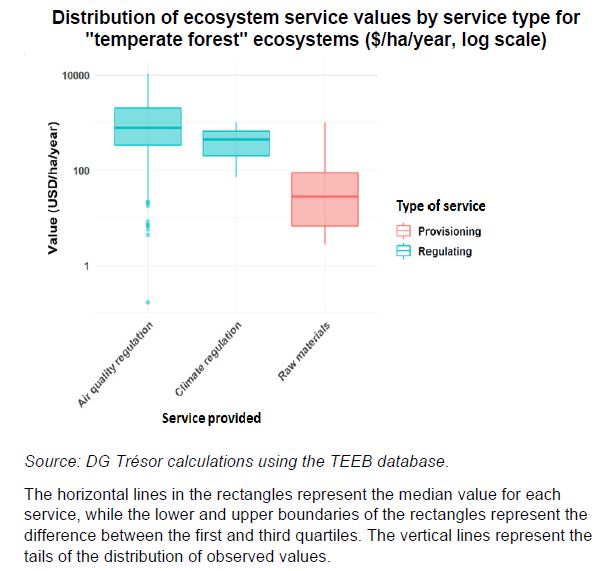Economic Assessments of Services Provided by Biodiversity
At a time when biodiversity is in decline, estimating the value of the services it provides makes it possible to measure the challenges of its preservation and to inform national and international decisions (post-2020 global framework and COP15). Although still fragmented and dependent on the methods used and the ecosystems analysed, existing estimates highlight the economic importance of biodiversity and the existence of trade-offs between public policy objectives.
The Intergovernmental Science-Policy Platform on Biodiversity and Ecosystem Services (IPBES) has made a tworrying assessment of global biodiversity loss. Unlike with climate change, the multidimensional nature of biodiversity makes it difficult to measure its status using a single indicator.
Recent decades have seen the development of analytical economic instruments to estimate the value of services provided by ecosystems and biodiversity. These analyses rely on indirect methods of valuation, including avoided costs and agent preferences.
A meta-analysis of 365 studies shows a high degree of heterogeneity in the estimated unit values of ecosystem services. Estimated unit values vary due to the diversity of estimation methods and differences in the nature of the cases analysed, the ecosystem under consideration and the services provided. Regulating services (e.g. climate change mitigation), for instance, have higher unit values on average than provisioning services (e.g. supply of raw materials).
Estimating the socio-economic value of ecosystem services contributes to raising awareness of the importance of preserving biodiversity and to improving the socio-economic evaluation of projects. Methodological difficulties imply that these values should be used with caution, especially when aggregated on a national or global scale. It should also be noted that biodiversity preservation objectives are typically established without reference to these value estimates.
Government action must be coordinated at international, national, and local levels. The "post-2020 global biodiversity framework" is currently under negotiation and is expected to be adopted at the 15th Conference of the Parties in Kunming, China, in 2022. This international policy response should make it possible to define common commitments that will then be implemented at national level, e.g. in France's "2030 national biodiversity strategy" currently under development.
